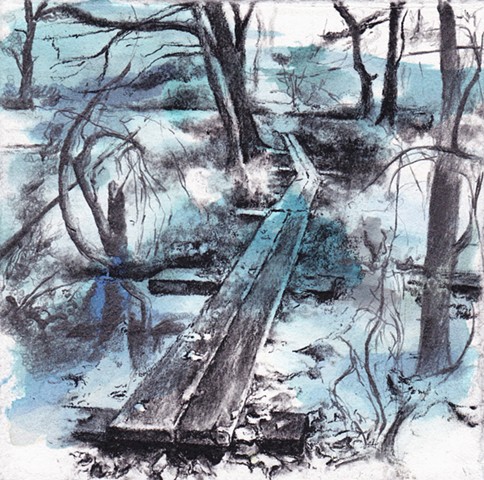What relationships exist between interiors and exteriors, security and vulnerability, private and public places, and obsessiveness and reflection? Semi-private, semi-public liminal spaces such as doorways, gardens, windows, bridges, and porches elicit particular anticipations, but can memory and venues such as bars function in the same way?
What epitomizes the idea of home? Is it the correlation between the physical structure and social connections? Is one more imperative for this definition? The home is never as secure as it appears. Buildings burn, people die, relationships fall apart. What happens when we lose the comfort of our first home? Can solace be found in spaces and places because of their physicality or through the potential they provide for meeting new people? Just as a house can be lost, so can other physical structures and new relationships, our definition of home forever in a state of flux.
The work examines all of these ideas, bringing the viewer into a mnemonic environment where fragmented elements near completion before becoming abstract and void, unfinished areas and raw and intuitive mark-making remain equally essential. Reminding the viewer of the various homes (and makeshift ones) they’ve occupied over the years, the drawings simultaneously provoke feelings of uneasiness and comfort.
Source material comes from personal family photographs, or ones taken of places I’ve come to define as home. However, figures are left absent allowing the viewer to fill in their expectations about previous or future occurrences (or lack there of). The house I lived in from my childhood in New York transforms into Baltimore row houses. Kitchen chairs morph into a streetlight, an inside nook blends into part of a baseball stadium.
Artwork is for sale. Inquire about prices and commissions under contact.
